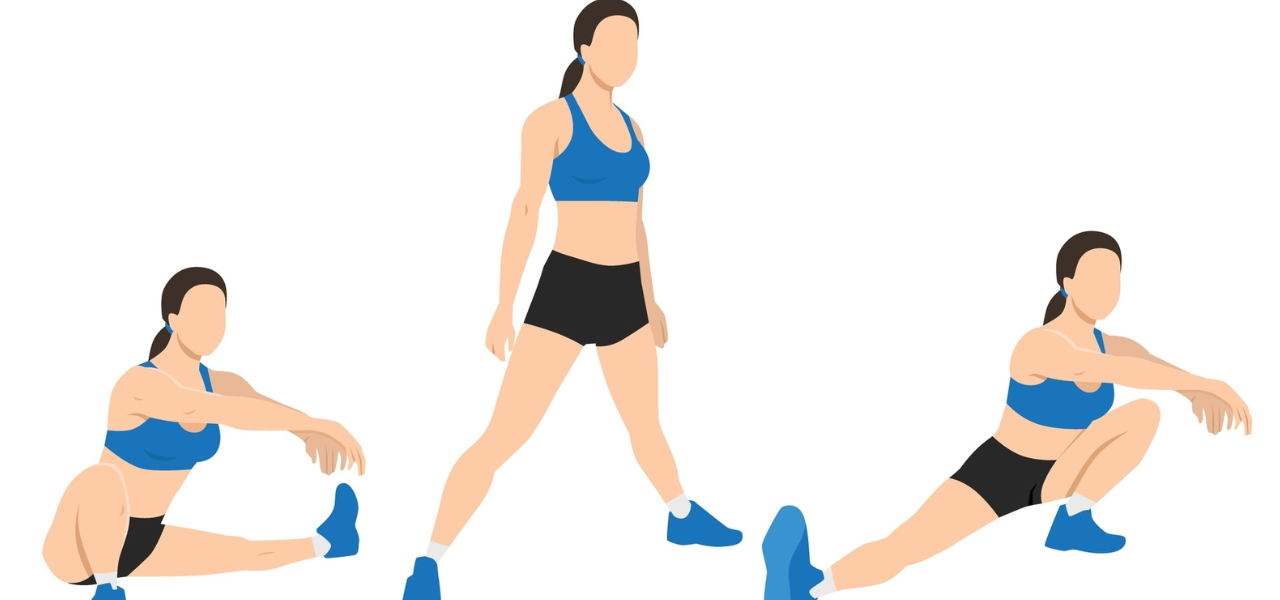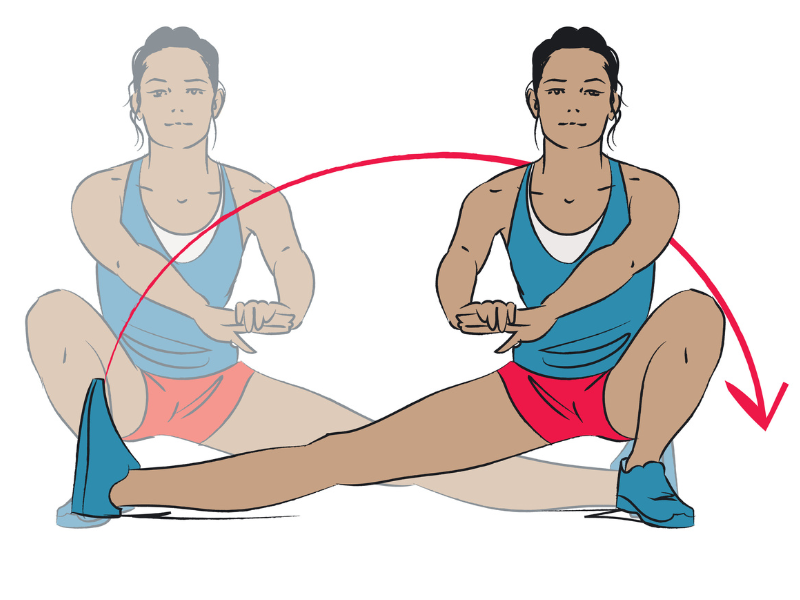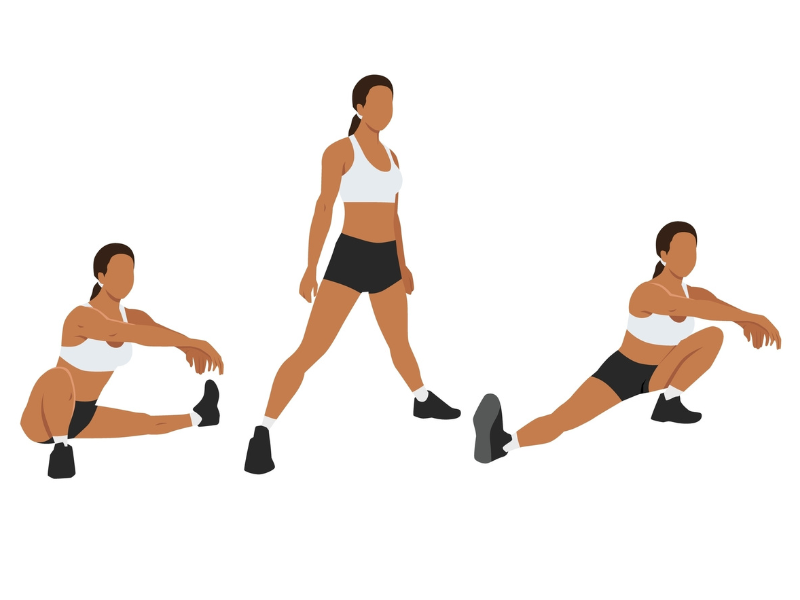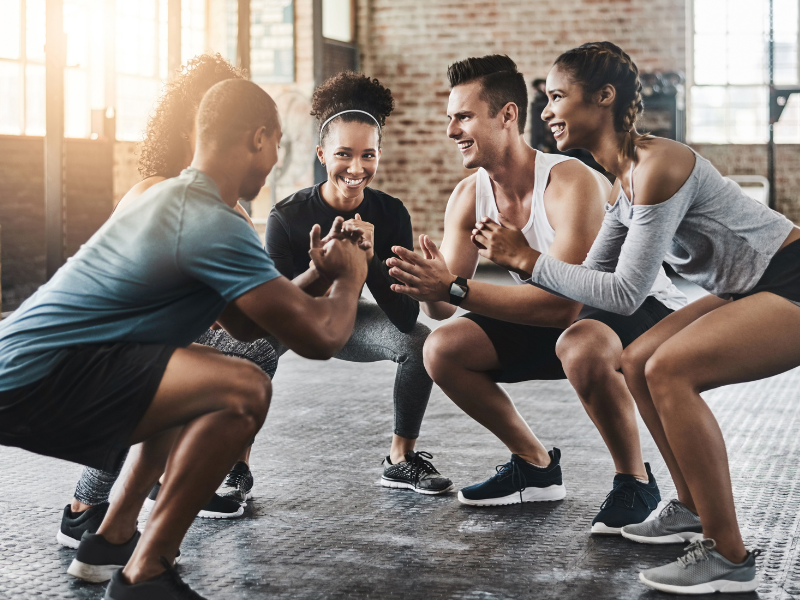




We’re big advocates for not skipping leg day, so it’s no surprise that we have a good list of glute workouts to recommend. In this article, we dive into all that you need to know about cossack squats, an exercise that sure ranks high on our list. Why is it so effective and how can you incorporate it into your routine? Read more to find out!
What is a Cossack Squat?

The cossack squat is a unilateral variation of a squat where you deep squat using one leg and the other leg is extended towards the side for your balance. It requires a certain level of coordination, mobility, and flexibility. It’s ideal for strengthening your lower body while also improving hip mobility.
Muscles Activated During the Cossack Squat
So how does this exercise work towards strengthening your lower body? The leg squatting activates the knee and hip extensors while the other leg warms up the hamstrings and adductors. Both the hamstrings and adductors are trained during the downward motion of the squat as the leg extends. The glutes and the quadriceps also play an important role in extending the hip and the knee when you’re at your full flexed position, and the surrounding tissues are activated too [1].
You may also like:
How To Do Kneeling Squat Effectively
Banded Fire Hydrant: Exercise Guide
How to Do the Cossack Squat
Follow the steps below in order to do cossack squats successfully:

- Starting Position: Stand with your feet wider than shoulder-width apart, toes pointed outward at about a 45° angle. Keep your chest up, shoulders back, and core engaged.
- Squat Down: Shift your weight to one leg and lower your hips by bending the knee of that leg. Keep the other leg straight and extended, with the toes pointing upward. Make sure your bent leg’s knee tracks over your toes.
- Depth: Lower until the thigh of your bent/squatting leg is parallel to the ground, or as deep as you can without losing form. Keep your chest upright and avoid leaning forward.
- Push Back Up: Push through the heel of your bent leg to rise back to the starting position. Bring your hips back to the center.
- Repeat: Alternate sides, performing the same movement on the other leg.
You can begin with bodyweight cossack squats and then change it up over time with weights, and you must be consistent with practicing the technique regularly. It’s also really important to have the right form – with a wide leg stance and external rotation of the leg that’s straight. If you’re having a hard time balancing, don’t hesitate to use support tools like a dumbbell or kettlebell to help with your balance and control.

Cossack Squat Variations
Here are some cossack variations you can try if you’re looking to have some variety in your routine or challenge yourself further:
1. Goblet Cossack Squat
This variation simply involves holding onto a weight close to your chest with both hands, a kettlebell or dumbbell, as you squat down and deep stretch to execute the original exercise
2. Supported Cossack Squat
Going down becomes more accessible to those who find it hard when you use a squat stand or TRX for support and to counter balance.
3. One-arm Overhead Cossack Squat
If you’d like to also work on your arm strength in the process, hold a dumbbell or kettlebell in one arm and keep it straight as you squat down and do the usual movement on both sides. Remember to keep your weight steady!
4. Landmine Cossack Squat
For a properly challenging variation we recommend this one as the external load really ramps up the intensity of the movement. Secure one end of a barbell to a corner of the landmine attachment, and then hold the barbell close to your chest as you dip below to do the usual movement.
For more glute-building exercises:
Top 6 Brazilian Butt Lift Workout Exercises for a Sculpted Behind
Bubble Butt Workout: Everything You Need To Know For Achieving The Dream Butt
Benefits of the Cossack Squat
The following are a few of the many benefits that you can reap from incorporating the cossack squat into your routine:

- Supercharges Lateral Movement: Cossack squats target the frontal plane, boosting your side-to-side hip mobility and adding variety to your routine that traditional exercises miss.
- Increases Flexibility & Range of Motion: These squats work wonders on your hips, knees, and ankles, improving flexibility and preventing strains, so you move with ease.
- Balances Strength: As a unilateral move, Cossack squats help fix any strength imbalances, enhancing muscle coordination and boosting your squat game.
- Enhances Functional Strength: Build lower body stability with Cossack squats, giving you better control and performance in all athletic movements.
- Boosts Lower Body Mobility: Improve hip and ankle flexibility, making running, jumping, and any other activity feel smoother and more efficient!

Conclusion
In conclusion, the cossack squat is a great exercise to elevate your lower body routine as it helps with strengthening multiple muscle groups at the same time. For more resources on exercises that can transform your fitness journey, check out the JustFit app!
Related articles:





